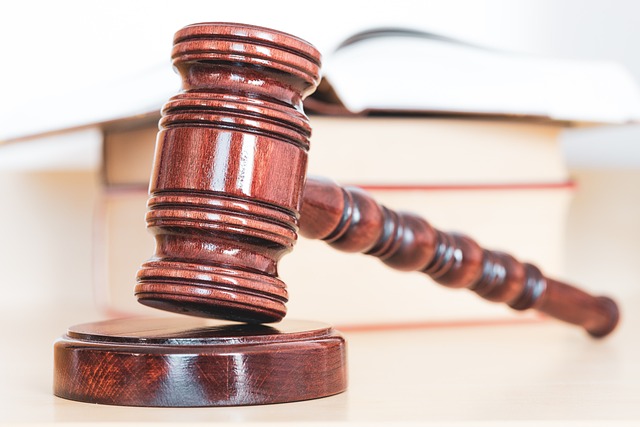Jury Nullification: Democracy's Safety Valve in the Courtroom
The power of citizen jurors to acquit defendants despite clear evidence of guilt represents one of the most controversial yet enduring features of our legal system. While rarely discussed in law schools and actively discouraged by many judges, jury nullification serves as a democratic check on legislative overreach and prosecutorial discretion. This ancient legal concept allows ordinary citizens to inject community values into a judicial process that might otherwise become mechanistic and divorced from evolving social standards.

The Historical Foundations of Jury Nullification
Jury nullification traces its roots to medieval England, where it emerged as a counterbalance to harsh royal authority. The landmark 1670 case of Bushell’s Case established the principle that jurors could not be punished for their verdicts, even when they contradicted judicial instructions. William Penn, later the founder of Pennsylvania, had been arrested for preaching to an unlawful assembly. Despite clear evidence of Penn’s technical guilt, jurors refused to convict him, viewing the law itself as unjust. When the judge attempted to imprison the jurors for their defiance, England’s highest court ruled that jurors must remain free to reach verdicts according to their conscience.
This principle traveled to American shores and became intertwined with colonial resistance. John Peter Zenger’s 1735 trial for seditious libel against the royal governor of New York resulted in acquittal despite his admitted publication of critical materials. The jury, guided by attorney Andrew Hamilton’s passionate arguments about the importance of truth and free expression, rejected the prosecution despite the judge’s instructions that truth was no defense to libel charges. This case helped establish press freedom in America decades before the First Amendment codified these protections.
The Constitutional Status and Legal Paradox
The Constitution nowhere explicitly mentions jury nullification, yet the concept remains embedded in our judicial system through several mechanisms. The Fifth Amendment’s double jeopardy clause ensures that acquittals cannot be appealed or overturned, meaning that jury nullification verdicts remain final. The Sixth Amendment guarantees trial by an impartial jury, which historically meant jurors who would judge both facts and law. The jury system itself predates the Constitution, representing one of the few unanimous elements in the Bill of Rights.
The legal paradox surrounding nullification creates tension within courtrooms nationwide. While jurors retain the power to nullify, they generally have no right to be informed of this power. Courts have consistently ruled that judges may prohibit defense attorneys from explicitly arguing for nullification or informing jurors of their nullification power. In United States v. Dougherty (1972), the DC Circuit Court upheld this contradiction, reasoning that while nullification serves as an essential “safety valve,” explicitly instructing juries about this power might lead to anarchy or inconsistent application of laws.
Contemporary Applications and Controversies
Nullification manifests differently across various eras and legal contexts. During Prohibition, juries frequently refused to convict defendants of alcohol-related crimes, eventually contributing to the repeal of the 18th Amendment. During the civil rights era, all-white Southern juries sometimes nullified to protect white defendants accused of violence against Black Americans, demonstrating nullification’s morally neutral character – it can serve either justice or injustice depending on community values.
More recently, nullification has appeared in drug prosecutions, particularly marijuana cases. As public opinion shifted toward favoring decriminalization or legalization, juries in some jurisdictions became increasingly reluctant to convict for possession offenses. This resistance sometimes preceded legislative changes, suggesting nullification can function as an early indicator of shifting social attitudes. Some states now permit medical necessity defenses that effectively authorize limited forms of nullification in certain contexts.
Military courts present another contemporary application. Military jurors occasionally nullify charges against service members when they believe commanders have overreached or when wartime conditions mitigate culpability. These scenarios illustrate nullification’s role as a pressure-release mechanism when formal legal structures fail to accommodate complex human realities.
Judicial and Prosecutorial Responses
The judiciary has developed various strategies to limit nullification’s impact while preserving its theoretical availability. Voir dire questioning often identifies and excludes potential nullifiers, particularly in politically charged cases. Some judges require jurors to swear they will follow the law regardless of personal disagreement. Jury instructions increasingly emphasize the duty to apply the law as instructed, without mentioning the countervailing historical tradition of jury independence.
Prosecutors employ their own countermeasures, including strategic charge selection to minimize nullification risks. Charges carrying mandatory minimum sentences restrict jury discretion by removing sentencing considerations from their purview. Prosecutors may also pursue multiple overlapping charges, reasoning that while jurors might nullify on some counts, they are unlikely to nullify across the entire indictment.
The Democratic Function in Modern Governance
Jury nullification continues to serve important functions in our legal system despite institutional resistance. It provides a democratic check on prosecutorial discretion, which has expanded dramatically with the proliferation of criminal laws. With over 4,500 federal crimes and countless state offenses, prosecutorial charging decisions significantly shape justice outcomes. Nullification offers citizens limited but meaningful input into this process.
Additionally, nullification provides immediate relief in cases where legislative reform lags behind evolving social standards. While legislatures eventually respond to shifting public attitudes, this process may require years or decades. Individuals facing prosecution under outdated or overreaching laws cannot wait for legislative correction. Nullification provides an immediate mechanism for applying community standards to individual cases, potentially preventing unjust outcomes while formal legal changes remain pending.
The tension between rule-based governance and individualized justice remains unresolved in American jurisprudence. Jury nullification stands as a reminder that our legal system ultimately derives its legitimacy from the people themselves, rather than from perfect procedural consistency. As society confronts emerging technological and social challenges that strain existing legal frameworks, this ancient safety valve may continue to play a vital if controversial role in adapting law to human realities.





